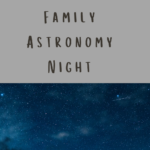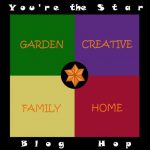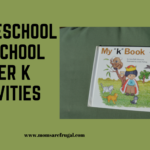Astronomy doesn’t have to be another curriculum purchase. Astronomy can be weaved into everyday life, and there are easy steps to add this subject to your homeschool. Kids will love and develop an appreciation for the sun, moon, stars, solar system and galaxy.
Going on a night walk provides a hands on approach to viewing, exploring and admiring the universe God made. Astronomy will weave into life through living books, stories, hands on activities, and demonstrations.
Viewing and charting the information can be kept in a binder, log, or folder. The best part is when your child asks for a telescope for Christmas so that they can view the moon. My eight year old asked for a telescope last Christmas. Confirmation for me that our night explorations were soaking in!
Easy Steps to Add Astronomy:
Hands-on activities lets kids create what they see or think. I was always a hands-on learner. Tell me and I forget show me and I learn.
Lap books can be created with each child’s individual talent and displayed so that the next year more learning can be based from that lap book. Use them to grow and see what new ideas’ are developing. Themes such as the sun, moon, or stars narrows down the subject.
Solar system hunts or games are fun and easy. As we drive at night the kids will look at the stars or ask about the moon. One time I told them the moon was made of cheese. It really isn’t, and I was joking.
Charting the moon with a journal is educational and shows the different phases the moon goes through as it changes. Kids love to look back at what they wrote the previous year.
Easy Demonstrations of Astronomy:
Create a Nebula jar is a great way to demonstrate part of Astronomy. It is easy, quick, and educational.
Drawing a map either with a large sheet of black paper or sidewalk chalk teaches the place of each planet in the solar system.
Re-creating constellations in a mini book, or with marshmallows is fun. An app or library book is a great resource for ideas on which constellations to make.
Books, Libraries and Colleges:
Last year I contacted a local college in our city and found out that they actually open and give tours of their astronomy building. It was free, and very educational. Each visible constellation was shown and explained in a movie and demonstration.
Smaller children can draw constellations or a picture from books.
Books give us a lot of information and pictures or notes are very helpful.
Will you give some of these tips a try?
Cheers,
Michelle







Leave a Reply